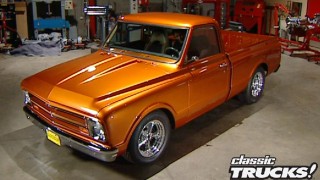
Trailboss Axle Upgrade
We transform our old 82 C7 into a more robust off-road vehicle by installing one-piece axles, a rear disc brake conversion kit, and add a premier power welder.
Season 2
Episode 19
Hosts: Stacey David, Mel Fair
First Air Date: July 20, 2018
Duration: 21 minutes 9 seconds















